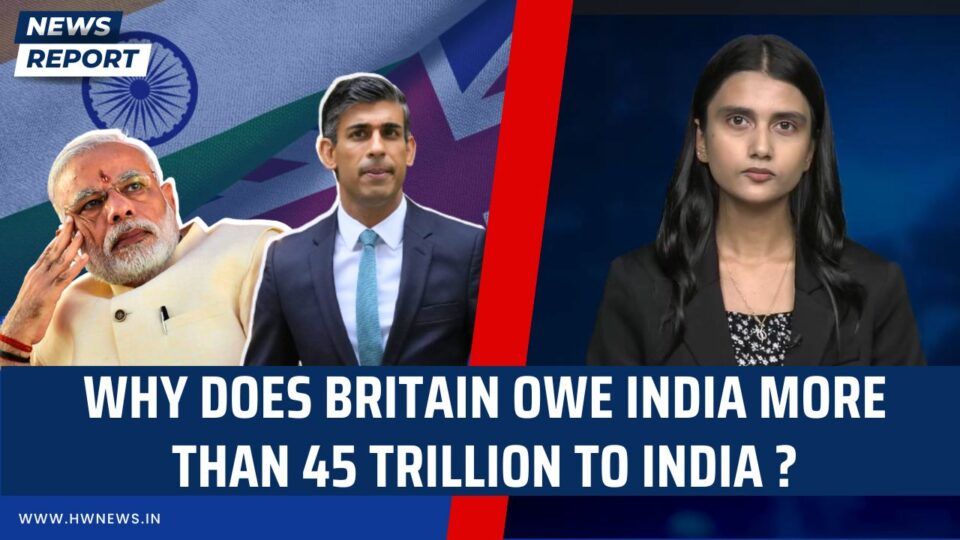On the 23rd of August, around 6:04 pm, India etched its name in history by becoming the first country to successfully land a spacecraft on the south pole of the moon. This significant achievement marked India as the fourth nation to accomplish a soft landing on the moon, following the United States, the former Soviet Union, and China. While this accomplishment received widespread national and international acclaim, it also stirred up controversy. In an unexpected turn of events, India’s recent triumph with the Chandrayaan-3 mission to the Moon’s south pole triggered a heated debate surrounding foreign aid between the United Kingdom and India. A social media post by journalist Sophie Corcoran and statements from news presenter Patrick Christys have sparked a contentious global discussion. Corcoran took to platform X (formerly known as Twitter) to argue that the UK should reconsider its aid to India in light of India’s advanced space program. She suggested that the UK should reclaim its investments. Christys, a presenter at GB News, took this sentiment further, demanding that India repay the £2.3 billion in foreign aid provided by Britain from 2016 to 2021. He also alluded to the 57 million pounds designated for India in the upcoming year. Christys quipped, “I congratulate India for landing on the dark side of the Moon. I would also like to invite India to return the £2.3 billion of foreign aid money that we sent them between 2016 and 2021. We are also set to give them 57 million pounds next year, and I think British taxpayers should retain that, don’t you? We shouldn’t be giving money to countries with a space program. As a rule, if you can afford to launch a rocket to the dark side of the Moon, you shouldn’t be seeking our assistance.” Naturally, these comments were met with strong opposition in India, a country that has a history of enduring over two centuries of colonial rule by the British. This raises the question: What exactly is UK aid, and has it truly benefited India in any substantial way? The UK aid logo is prominently displayed in regions where their projects are active, such as health clinics, school materials, and emergency food supplies. It serves as a public acknowledgment of development initiatives supported by British taxpayers. Officially, UK aid to India was meant to end in 2015 after India expressed its self-sufficiency. However, a review by the UK aid spending oversight body revealed that approximately £2.3 billion (Rs 23,000 crore) in aid was provided to India between 2016 and 2021. Given the British history of economic plunder and exploitation, their appeal for funds from countries they have historically exploited takes on a rather ironic and even comical tone. It is quite unfair how the Brits are asking back the aid money from India as if it were rational. The UK provides aid money for development initiatives and emergency food supplies, whereas ironically during World War 2, Winston Churchill diverted essential supplies from Indian civilians who were suffering from the Bengal famine at that time and transferred these supplies as stockpiles to Europe. Looking back in history at both the world wars, during World War 1, Indian taxpayers paid 100 million pounds for a war that wasn’t even theirs. Again in World War 2, out of Britain’s total war debt of 1.3 billion pounds as of 1945 money, 1.25 billion was owed to India and was never actually paid. This history of exploitation extended to cultural and historical artifacts such as the Ring of Tipu Sultan and the Wine Cup of Shah Jahan. Additionally, India’s most prized possession, the Koh-i-Noor diamond, is set within the British crown. So, to put it simply, the British are now requesting the money they provided between 2016 and 2020 to be returned. In light of this, my appeal to Mr. Patrick Christys is straightforward: I kindly ask for the reimbursement of the 100 million that our Indian taxpayers contributed during World War 1, along with the accumulated annual interest over 105 years. Additionally, let’s factor in the 1.25 Billion that the UK owes us from World War 2 and has yet to fulfill – this amounts to 1.8 Billion USD in today’s currency. Furthermore, let’s not overlook the staggering 45 trillion USD that the East India Company looted from us during the colonial era.
#UK #India #Britain #Trillion #AidMoney #ColonialEra #PatrickChristys #ISRO #Chandrayaan #HWNews
As an independent media platform, we do not take advertisements from governments and corporate houses. It is you, our readers, who have supported us on our journey to do honest and unbiased journalism. Please contribute, so that we can continue to do the same in future.

